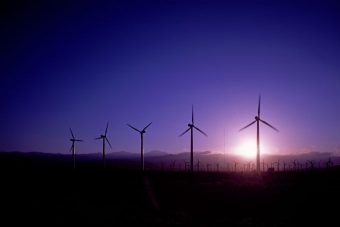
MAKE Consulting has predicted that annual wind power capacity additions will average out at more than 65 gigawatts (GW) between 2018 and 2027, thanks in part to the increasing demand in offshore wind and the expanding contribution of emerging markets.
MAKE Consulting, which is now a part of research and consultancy group Wood Mackenzie, published new figures on Friday for the global wind market over the next 10 years. The research, which focused less on resulting capacity and more on regional trends, forecasts annual wind power capacity additions will average out at more than 65 GW from 2018 to 2027. Specifically, MAKE highlights “incentive expirations and markets adjusting to new auction mechanisms” as resulting in a more than 30% increase in annual capacity additions between 2017 and 2020. Further, and fortunately, a second increase in additions will take place between 2023 and 2027 due to the “realization of offshore ambitions and sustained momentum from emerging markets globally.”
However, such success is reliant on the global wind energy industry’s ability to continue winning capacity awards at auction, and being able to deliver on time and within budget.
Digging into regional specifics, MAKE predicts that the outlook in Europe will depend more and more on the success of the offshore wind energy sector, which it predicts will account for more than a quarter of new capacity added between 2018 and 2027. Specifically, offshore wind will expand to account for 50% of new capacity in Northern Europe, with the UK unsurprisingly accounting for the majority of this capacity, although Denmark will contribute in the near-term, and Sweden and Ireland will contribute in the long-term.
Offshore wind will be less important in the rest of Europe, however, contributing only 10% in Western Europe over the next ten years, with France, Germany, and the Netherlands each expected to add more than 5 GW. As for onshore, Germany and France will dominate here. In Southern Europe, a total of 40 GW of new wind capacity is expected. Spain and Turkey will together add more than 13 GW worth of wind power capacity over the next ten years, and Italy will similarly contribute thanks to its new energy plan. Markets in Eastern Europe will contribute annual additions in excess of 1 GW from 2019.
China’s wind industry will take a little time to get its motor running following the National Energy Administration’s warning mechanism, but as curtailment levels drop and wind power consumption increases, annual capacity levels will begin to rise. Specifically, MAKE predicts that annual capacity additions will exceed 3 GW between 2022 and 2027. Australia will see two good years of over 1 GW each in 2018 and 2019 before a considerable drop-off due to government apathy. India, on the other hand, will see annual growth through 2022.
The forecast for wind in North America is much less impressive, however, after the US narrowly avoided “complete disaster through tax reform negotiations at the end of 2017” which resulted in modified timelines and pushing some capacity into the 2019-20 growth bubble. Annual capacity additions will drop off “considerably” post 2021, to the tune of nearly a threefold decrease in average annual capacity additions between 2022 and 2027 compared to the four years prior.
Near-term growth in Latin America is heavily reliant upon a small number of countries, including Brazil, Argentina, Chile, and Mexico. Sustained long-term growth is expected with the addition of new markets from 2020.
Annual capacity additions are expected to triple in the Middle East and Africa in 2027 compared to 2018 as a result of contributions made by emerging markets.
Source: cleantechnica.com

